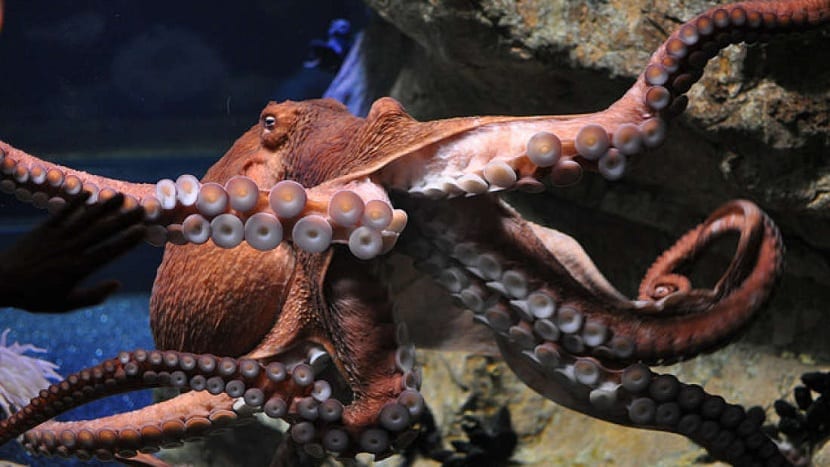
Octopuses are really peculiar animals that surprise more than one. Many are fans who love to dive and examine octopuses among their most favorite species. In this case, we are going to talk about an octopus whose size reaches the record for its size. Its about giant octopus. This animal is very special and, while some species of octopus can measure only a few inches long, this octopus can measure 15 feet.
In this article we are going to reveal to you the deepest secrets of the giant octopus so that you can learn more about this animal and the mysteries of the sea.
Key features
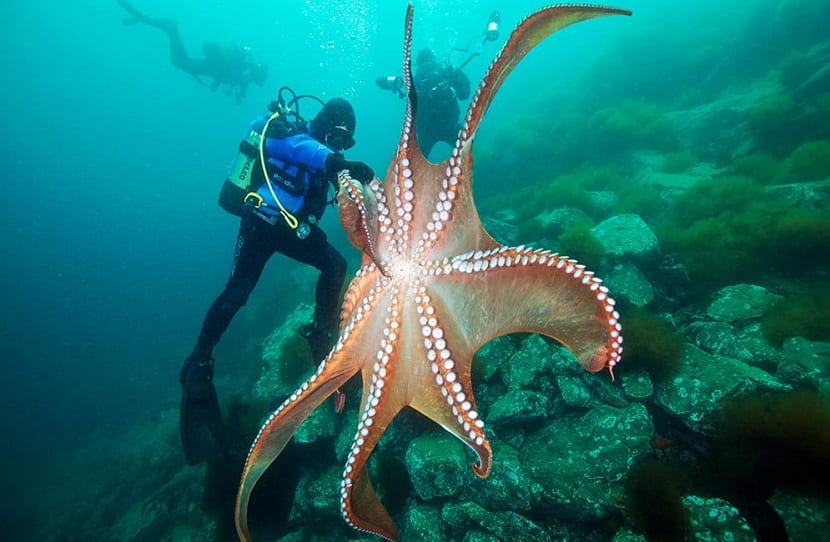
The difference in size between this animal and others of its kind is something really incredible. Some scientists say that it can measure even more than what has been recorded. That is, there are some larger specimens. And it is that an animal that weighs 150 pounds and measures 15 feet long cannot be normal.
It has a great ability to blend in with its surroundings with relative ease despite its size. It can be easy to miss his presence, even if you have him right in front of you. This ability is enhanced by its changes in body pigmentation. It is something really amazing. This camouflage has had to be improved because, being so large and heavy, they cannot move as easily or hide in the crevices of the rocks as other octopuses are used to.
Therefore, in order to protect themselves from predators, they have this unique camouflage. Normally, its main color is red and brown. It can be presented in light and dark tones. However, as it lives in very varied habitats, it is capable of turning into almost any color.
Its anatomy is quite interesting. They usually lie on the bottom of the ocean as if it were a starfish. This fact means that it can avoid some predators going unnoticed in the background. The arms are very long and thick. It has a large number of suction cups.
It has a fairly large head compared to other species of octopus. One of the parts that it has in the mantle has a spherical shape. This makes it possible to move without much effort.
Evolution and behavior
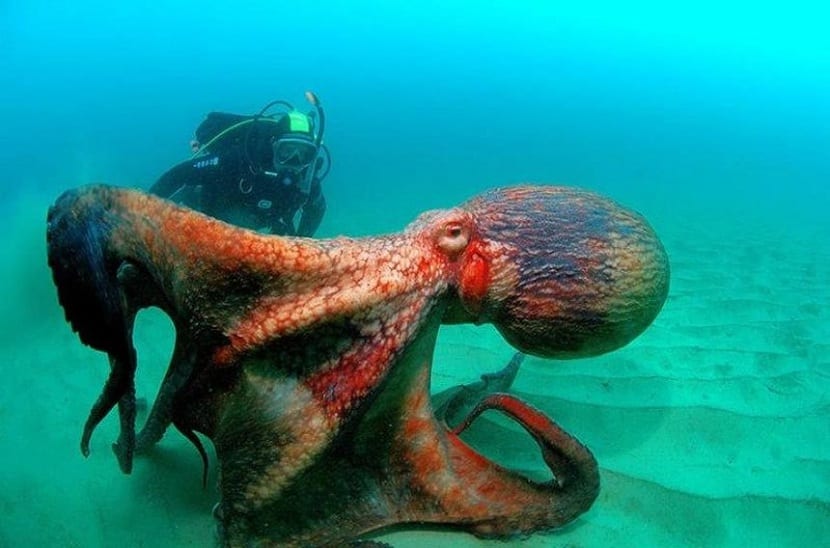
No one knows for sure what has happened throughout evolution for the giant octopus to have these characteristics. There is some speculation about how they have changed in their characteristics from millions of years ago to the present day.
Some scientists think that they have been able to adapt to environments over time in order to survive in different conditions. The development of so many arms can be related to an evolutionary process for them. Also mention the camouflage that helps you go unnoticed.
As for their behavior, there is not much information about it. However, it is known that he has the ability to learn many things as the days go by. This makes it adapt to new environments and survive more easily. Some of his relatives can be seen to have a good memory and this helps him to solve certain problems.
These octopuses scare you easily if you go diving since they do not move as fast as the others. To escape, they release more ink with greater frequency and volume as they have larger glands.
Habitat and feeding of the giant octopus
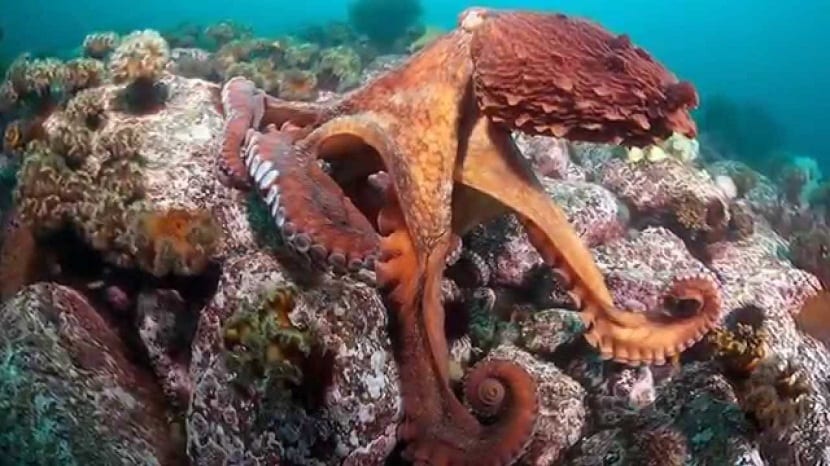
The giant octopus lives in the North Pacific Ocean. It is the home of this species and can live about 200 meters under the sea. In deeper waters it has been seen to be able to search for more food. This he does when he can't find the desired food or no hiding place to be safe.
As for food, they spend most of the night in search of food. The disadvantage of being a larger species is that they must eat more to increase their energy and stay healthy.
They usually have no problem finding food in its natural environment. Some of the foods they eat the most are fish, clams, crabs, and some shrimp. Although it is more difficult to think about, some sharks are preyed upon by this giant octopus. When these octopuses eat a shark, they are usually satiated long enough not to search for food for several days. It is usually an opportunistic species that takes advantage of any possibility in the environment to acquire food.
The fact that it is capable of consuming sharks has been verified through the study of the stomach contents of some specimens studied.
Reproduction
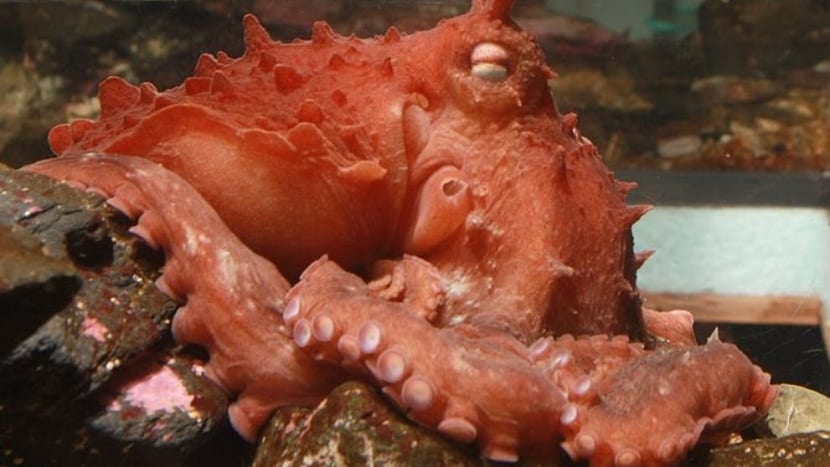
During the mating season, the male and female come into contact. It is the only time that both sexes are together. Normally, they are separate as they are a solitary species. The male takes a sperm sac and places it on the female's mantle. This bag has a layer that protects it from rupture in the event of any mishap. It must be well protected because the female must carry it for 6 months before the eggs are ready to be laid and hatch.
The male's sperm-filled sac allows for about 100.000 eggs. Obviously, not all eggs become adult individuals. The development of the eggs can take several weeks. At this time, the female has the priority of keeping them and puts her young before her own needs.
It will do everything in its power to protect its young from predators and keep the eggs clean so there are no problems. When the eggs hatch, the female normally dies at the end of her lifespan. The male usually dies earlier, when they have mated.
The life expectancy of this species is about 3 to 5 years. It is the female who guarantees the survival of the species. Of the 100.000 eggs at the beginning, only about 1.000 usually survive at the end.
I hope that with this information you can learn more about the giant octopus and the secrets it keeps.